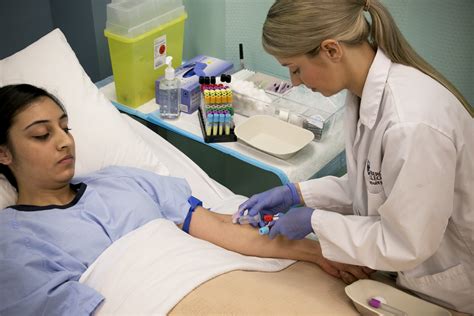Essential Skills Every Blood Phlebotomist Must Master: A Comprehensive Guide
Introduction
A career as a blood phlebotomist is both rewarding and challenging. As vital members of the healthcare team, phlebotomists play an essential role in patient care by collecting blood samples for diagnostic testing. To excel in this profession, phlebotomists must master a variety of skills. In this comprehensive guide, we’ll explore the essential skills every blood phlebotomist must hone to ensure successful venipuncture and provide excellent patient care.
The Essential Skills
1. Technical Proficiency
Mastering the technical aspects of blood collection is crucial for any phlebotomist. This includes:
- Knowlege of different types of needles and their purposes.
- Proper techniques for venipuncture, including site selection and puncture angle.
- Infection control practices, such as the use of gloves and sanitizing equipment.
2. Patient Interaction Skills
Creating a positive experience for patients is vital in phlebotomy.Successful phlebotomists must:
- Communicate effectively with patients to alleviate anxiety.
- Demonstrate empathy and understanding of patient concerns.
- Provide clear instructions and information regarding the procedure.
3. Attention to Detail
Phlebotomists must demonstrate extraordinary attention to detail, including:
- Carefully labeling specimens to avoid mix-ups.
- Double-checking patient information before the procedure.
- Monitoring patients for any adverse reactions during blood collection.
4. Time Management
Effective time management skills help phlebotomists maintain a smooth workflow. This includes:
- Prioritizing tasks efficiently during busy shifts.
- Scheduling appointments and managing waiting times for patients.
- Handling multiple patients and tasks without compromising quality.
5. Knowledge of Anatomy
A solid understanding of human anatomy, particularly the circulatory system, is crucial for phlebotomists. They should know:
- The location of major veins such as the median cubital vein.
- How to identify suitable sites for venipuncture.
- Safe practices for drawing blood from different patient demographics.
Benefits of Mastering Phlebotomy Skills
Mastering these essential skills offers numerous benefits, including:
- Increased confidence when performing blood draws.
- Improved patient satisfaction and reduced anxiety in patients.
- Greater job prospects and opportunities for advancement in the healthcare field.
Practical Tips for Aspiring Phlebotomists
To build these essential skills, consider the following practical tips:
- Attend accredited phlebotomy training programs and gain hands-on experience.
- Practice on training arms to refine your venipuncture technique.
- Seek mentorship from experienced phlebotomists to gain insight and advice.
- Stay updated on the latest phlebotomy practices and technologies through continued education.
Case Studies & First-Hand Experiences
Case Study: anxiety Reduction in Pediatric Patients
A phlebotomist at a local children’s hospital implemented a “Child Life” program, aimed at comforting young patients during blood draws. By utilizing toys and engaging in conversation, the phlebotomist managed to reduce anxiety levels considerably, resulting in fewer procedural failures and enhanced patient cooperation. this case highlights the importance of patient interaction skills.
First-Hand Experience: A Day in the Life of a Phlebotomist
Jane, a certified phlebotomist with over five years of experience, shares her viewpoint:
Each day presents an chance to connect with patients. I always focus on effective communication, ensuring each patient feels at ease before the procedure. It’s rewarding to know that my role is essential in their healthcare journey.
conclusion
Becoming a skilled blood phlebotomist requires a combination of technical expertise, patient care skills, and knowledge of human anatomy. By mastering these essential skills, aspiring phlebotomists can enhance their careers and provide exceptional service in the healthcare field. Whether you are starting your journey or looking to refine your skills, remember that practice and compassion are key to becoming an excellent phlebotomist.
